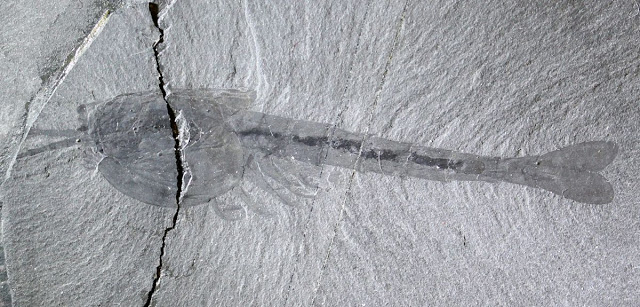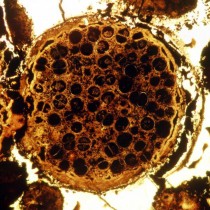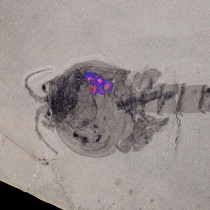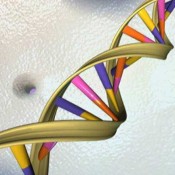Fossils that preserve entire organisms (including both hard and soft body parts) are critical to our understanding of evolution and ancient life on Earth. However, these exceptional deposits are extremely rare. The fossil record is heavily biased towards the preservation of harder parts of organisms, such as shells, teeth and bones, as soft parts such as internal organs, eyes, or even completely soft organisms, like worms, tend to decay before they can be fossilised. Little is known about the environmental conditions which stop this process soon enough for the organism to be fossilised.
New Oxford University research suggests that the mineralogy of the surrounding earth is key to conserving soft parts of organisms, and finding more exceptional fossils. Part-funded by NASA, the work could potentially support the Mars Rover Curiosity in its sample analysis, and speed up the search for traces of life on other planets.
Perhaps the most iconic of all exceptional fossil deposits is the Burgess Shale of Canada, popularised by Stephen J. Gould’s Wonderful Life. Dating to around 500 million years ago, the deposit preserves exceptional fossils from the Cambrian Explosion, an event which saw the rapid diversification of early animal life from simpler single-celled ancestors. Burgess Shale-type fossil localities are now known across the globe and without them roughly 80% of Cambrian organisms (those that have no hard skeleton or shell) would be unknown, distorting our picture of early animal evolution.
Published in Geology, the study, conducted by researchers from Oxford’s Department of Earth Sciences, Yale University, and Pomona College, builds on their previous research which revealed that certain clay minerals are toxic to bacteria that decay marine animals. This time around, the team set out to find geological evidence that rocks composed of the same clay minerals are the hosts of Burgess Shale-type fossils.
The team examined more than 200 Cambrian rock samples using powder X-ray diffraction analysis to determine their mineralogical composition, comparing rocks with Burgess Shale-type fossils with those with only fossilised shells and bones. Nicholas Tosca, Associate Professor of Sedimentary Geology at Oxford, said: ‘The number of samples required for this study was made possible because the diffractometer at Oxford collects mineralogical data 250 times faster than a conventional instrument.’
The findings reveals that soft tissue fossils are generally found in rocks rich in the mineral berthierine, one of the main clay minerals identified by the previous study as being toxic to decay bacteria. Ross Anderson, lead author and fellow at All Souls College, Oxford, explains: ‘Berthierine is an interesting mineral because it forms in tropical settings when the sediments contain elevated concentrations of iron. This means that Burgess Shale-type fossils are likely confined to rocks which were formed at tropical latitudes and which come from locations or time periods that have enhanced iron. This observation is exciting because it means for the first time we can more accurately interpret the geographic and temporal distribution of these iconic fossils, crucial if we want to understand their biology and ecology.’
The study provides a mineralogical signature which can be used to find the more elusive sites that are home to these extraordinary fossils. ‘The mineralogical associations we identified mean that for a given Cambrian sedimentary mudrock we can predict with around 80% accuracy whether it is likely to contain Burgess Shale-type fossils,’ explains Anderson.
Of the project’s wider applications, potentially supporting the search for life beyond our own planet, Anderson adds: ‘For the vast majority of Earth’s history, life has not possessed hard shells or skeletons. This means that if we want to look for fossil evidence of life on other planets like Mars, the chances are we probably need to find fossils of entirely soft organisms, and Burgess Shale-type fossilisation provides a way. NASA’s Curiosity rover has the ability to record mineralogy on the Martian surface, so it could potentially look for the types of rocks which might be most conducive to preserving these fossils.’
To expand their understanding of the exceptional preservation of soft organisms, the team are currently delving further back into Earth history, to investigate the preservation of microbes before macroscopic organisms with skeletons or shells evolved.






